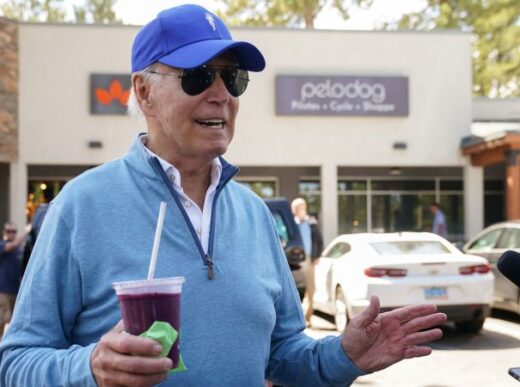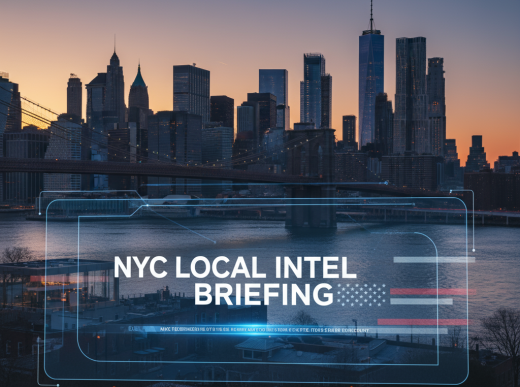Your Monday Intel Briefing: Los Angeles’ Top Stories for September 8, 2025
By PRAI Editorial Team
Published: September 8, 2025
Table of Contents
- Executive Summary
- Hollywood Production Crisis Deepens
- AI Revolution Transforms LA Industries
- Tech Job Cuts Hit California Hard
- Entertainment Industry Adaptation
- Business and Economic Outlook
- Political Landscape
- Infrastructure and Transportation
- Key Takeaways
Executive Summary
Los Angeles faces a pivotal moment as the entertainment capital grapples with unprecedented challenges while simultaneously embracing technological transformation. This Monday’s intelligence briefing reveals a city in transition, where artificial intelligence is reshaping traditional industries, job cuts are mounting across the tech sector, and Hollywood production continues its concerning decline.
“Los Angeles is experiencing the most significant industrial transformation since the rise of television, with AI and economic uncertainty creating both unprecedented challenges and remarkable opportunities.” – LA Economic Development Council
The convergence of technological disruption, economic headwinds, and industry evolution positions Los Angeles at a critical juncture that will define its role in the global economy for decades to come.
Hollywood Production Crisis Deepens
Production Numbers Paint Grim Picture
The latest quarterly data reveals a troubling continuation of Hollywood’s production exodus, with on-location shoot days in Los Angeles falling 6.2% in Q2 2025 compared to the same period in 2024. This decline represents more than just statistics—it signals a fundamental shift in how and where entertainment content is created.
Key Production Metrics:
- Feature film production: 553 shoot days (21.4% decline year-over-year)
- Television production showing modest recovery signs
- Overall production days remain significantly below pre-pandemic levels
- Economic impact estimated at $2.8 billion in lost revenue
“The misery in L.A. is real. We’re watching decades of industry leadership slip away to other states and countries offering better incentives.” – Industry Production Executive
The Incentive War Intensifies
California’s film incentive program, while substantial, continues to lose ground to more aggressive offerings from competing jurisdictions. States like Georgia, Louisiana, and New Mexico have captured significant market share through:
- Higher rebate percentages (up to 40% vs. California’s 25%)
- Streamlined application processes
- Lower overall production costs
- More flexible labor regulations
The exodus has created a ripple effect throughout LA’s economy, impacting:
- Equipment rental companies
- Catering services
- Transportation providers
- Post-production facilities
- Skilled technical workers
Potential Recovery Signals
Despite the challenging landscape, industry analysts identify several hopeful indicators:
Feature Film Renaissance: Recent reports suggest major studios are reconsidering California for tent-pole productions, driven by:
- Access to top-tier talent
- Established infrastructure
- Proximity to decision-makers
- Brand association with Hollywood prestige
Streaming Platform Investments: Netflix, Amazon, and Apple continue expanding their LA footprints, with new studio facilities and long-term production commitments.
AI Revolution Transforms LA Industries
Marketing and Advertising Disruption
Los Angeles’ massive marketing and advertising sector is experiencing unprecedented transformation as artificial intelligence reshapes every aspect of the industry. The recent “Changing The Script: How AI Is Impacting LA’s Top Industries” conference highlighted the scope of this revolution.
AI Applications Transforming Marketing:
- Personalized Content Creation: AI-generated advertisements tailored to individual consumers
- Predictive Analytics: Advanced algorithms forecasting consumer behavior
- Automated Media Buying: Machine learning optimizing ad placement and timing
- Creative Assistance: AI tools supporting human creativity in campaign development
“Every element of marketing, from concept to execution, is being fundamentally reimagined through artificial intelligence. The companies that adapt will thrive; those that don’t will disappear.” – Marketing Technology Analyst
Entertainment Industry AI Integration
Hollywood’s relationship with artificial intelligence remains complex, balancing innovation opportunities with workforce concerns:
Production Applications:
- Script Analysis: AI evaluating screenplay potential and market appeal
- Visual Effects: Machine learning accelerating CGI and post-production
- Casting Assistance: Algorithms analyzing actor suitability for roles
- Distribution Optimization: AI determining optimal release strategies
Creative Concerns:
- Writer and actor unions negotiating AI usage guidelines
- Intellectual property questions surrounding AI-generated content
- Quality control challenges with automated creative processes
- Ethical considerations in AI-assisted storytelling
Tech Sector Transformation
Los Angeles’ growing tech sector is both driving and experiencing AI transformation:
Startup Ecosystem:
- AI-focused startups receiving record venture capital investment
- Established companies pivoting to incorporate AI capabilities
- New accelerator programs specifically targeting AI entrepreneurs
- Cross-pollination between entertainment and tech sectors
Workforce Evolution:
- High demand for AI specialists and data scientists
- Retraining programs for traditional tech workers
- New educational partnerships between universities and industry
- Salary premiums for AI-skilled professionals reaching 40-60%
Tech Job Cuts Hit California Hard
Statewide Impact Analysis
California’s technology sector is experiencing its most significant contraction since the dot-com crash, with job cuts in 2025 already surpassing the total for 2024. Los Angeles, while not as severely impacted as the Bay Area, faces substantial challenges.
Contributing Factors:
- Economic Uncertainty: Rising interest rates and inflation concerns
- AI Automation: Companies reducing workforce through technological efficiency
- Government Cost-Cutting: Federal spending reductions affecting defense contractors
- Market Correction: Post-pandemic hiring boom reversal
“The convergence of AI advancement and economic uncertainty has created a perfect storm for tech employment. Companies are simultaneously cutting costs and investing in automation.” – Labor Economics Researcher
Los Angeles Specific Impact
While Silicon Valley bears the brunt of tech layoffs, Los Angeles faces unique challenges:
Affected Sectors:
- Aerospace and Defense: Major contractors reducing workforce
- Entertainment Technology: Streaming platforms optimizing operations
- Fintech Companies: Consolidation in financial services technology
- E-commerce Platforms: Efficiency improvements reducing staffing needs
Geographic Distribution:
- Santa Monica tech corridor experiencing significant cuts
- Playa Vista “Silicon Beach” seeing mixed results
- Downtown LA fintech sector particularly affected
- Culver City entertainment tech companies adapting
Workforce Adaptation Strategies
Los Angeles is implementing comprehensive strategies to address tech sector displacement:
Retraining Initiatives:
- City-sponsored coding bootcamps focusing on AI and machine learning
- Community college partnerships offering rapid certification programs
- Industry-specific retraining for entertainment technology workers
- Entrepreneurship support for displaced tech professionals
Economic Diversification:
- Increased focus on healthcare technology
- Green technology and sustainability initiatives
- Advanced manufacturing and robotics
- Logistics and supply chain technology
Entertainment Industry Adaptation
Streaming Wars Evolution
The streaming landscape continues evolving, with major implications for Los Angeles-based content creation:
Platform Strategies:
- Netflix: Doubling down on international content while maintaining LA presence
- Amazon Prime: Expanding original programming with focus on big-budget productions
- Apple TV+: Selective approach emphasizing quality over quantity
- Disney+: Leveraging franchise properties and theme park synergies
Content Trends:
- Increased demand for unscripted and reality programming
- International co-productions gaining prominence
- Shorter series runs becoming standard
- Multi-platform content strategies
Labor Relations and Union Negotiations
The entertainment industry’s labor landscape remains dynamic:
Key Issues:
- AI usage guidelines and protections
- Streaming residual payments
- International production impacts
- Gig economy worker classifications
Recent Developments:
- Writers’ union establishing AI usage protocols
- Actors’ union negotiating deepfake protections
- Technical unions addressing automation concerns
- Production worker safety standards updates
Innovation in Content Creation
Los Angeles remains at the forefront of entertainment innovation:
Technological Advances:
- Virtual production techniques reducing location shooting needs
- AI-assisted editing and post-production workflows
- Immersive content for VR and AR platforms
- Interactive storytelling formats
Business Model Evolution:
- Direct-to-consumer content distribution
- Subscription service diversification
- Advertising-supported streaming growth
- International market expansion strategies
Business and Economic Outlook
Economic Indicators
Los Angeles’ economic performance reflects broader California trends while maintaining unique characteristics:
Positive Indicators:
- Tourism recovery approaching pre-pandemic levels
- Port of Los Angeles maintaining strong cargo volumes
- Real estate market showing resilience
- Small business formation rates increasing
Challenges:
- High cost of living affecting workforce retention
- Commercial real estate vacancy rates elevated
- Energy costs impacting manufacturing
- Regulatory compliance expenses
Investment Climate
Venture capital and private equity activity in Los Angeles shows mixed signals:
Growth Sectors:
- Healthcare technology and biotechnology
- Clean energy and sustainability
- Advanced manufacturing and aerospace
- Financial technology and cryptocurrency
Investment Trends:
- Larger average deal sizes but fewer total deals
- Increased focus on profitability over growth
- International investors showing continued interest
- Government incentives supporting specific sectors
Infrastructure Development
Major infrastructure projects continue reshaping Los Angeles:
Transportation:
- Metro expansion projects progressing
- LAX modernization nearing completion
- Port automation initiatives advancing
- Electric vehicle charging network expansion
Technology Infrastructure:
- 5G network deployment accelerating
- Fiber optic expansion in business districts
- Smart city initiatives pilot programs
- Cybersecurity infrastructure investments
Political Landscape
Municipal Leadership
Los Angeles city government faces complex challenges requiring innovative solutions:
Key Policy Areas:
- Homelessness crisis response strategies
- Public safety and police reform initiatives
- Climate change adaptation and mitigation
- Economic development and job creation
Recent Developments:
- New housing development incentive programs
- Public-private partnerships for infrastructure
- Technology adoption in city services
- Community engagement initiatives
State and Federal Relations
California’s relationship with federal policy significantly impacts Los Angeles:
Federal Policy Impacts:
- Immigration policy affecting workforce
- Trade relationships influencing port operations
- Technology regulation affecting local companies
- Climate policy supporting green initiatives
State Initiatives:
- Film incentive program modifications
- Technology sector support measures
- Housing affordability initiatives
- Transportation funding allocations
Infrastructure and Transportation
Metro System Expansion
Los Angeles continues its ambitious public transportation expansion:
Current Projects:
- Purple Line Extension to Westwood
- Crenshaw/LAX Line completion
- Regional Connector downtown integration
- Bus rapid transit network expansion
Future Planning:
- Sepulveda Transit Corridor development
- West Santa Ana Branch Light Rail
- East San Fernando Valley Transit Corridor
- Airport connectivity improvements
Port Operations
The Port of Los Angeles maintains its position as a critical economic engine:
Performance Metrics:
- Container volume remaining strong despite global challenges
- Automation initiatives improving efficiency
- Environmental sustainability programs advancing
- Labor relations maintaining stability
Strategic Initiatives:
- Zero-emission transportation goals
- Supply chain resilience improvements
- Technology integration for tracking and logistics
- International trade relationship development
Smart City Technology
Los Angeles is implementing comprehensive smart city initiatives:
Technology Deployments:
- Traffic management system upgrades
- Environmental monitoring networks
- Public safety technology integration
- Citizen services digitization
Innovation Partnerships:
- University research collaborations
- Private sector technology pilots
- Federal grant program participation
- International best practice adoption
Key Takeaways
Strategic Priorities for Los Angeles
- Industry Diversification: Reducing dependence on entertainment while maintaining creative economy leadership
- Workforce Development: Preparing workers for AI-driven economy through education and retraining
- Infrastructure Investment: Continuing transportation and technology infrastructure development
- Innovation Ecosystem: Supporting startup growth and technology adoption across sectors
- Economic Resilience: Building capacity to weather industry disruptions and economic cycles
Opportunities and Challenges
Major Opportunities:
- AI and technology integration across traditional industries
- International trade and investment growth
- Clean energy and sustainability leadership
- Creative economy evolution and expansion
Critical Challenges:
- Entertainment industry production decline
- Tech sector job displacement
- Housing affordability and workforce retention
- Infrastructure maintenance and expansion costs
Looking Ahead
Los Angeles stands at a transformative moment, with the potential to emerge stronger from current challenges through strategic adaptation and innovation. The city’s success will depend on its ability to:
- Embrace technological change while protecting workers
- Maintain creative industry leadership while diversifying economically
- Address infrastructure needs while managing fiscal constraints
- Foster innovation while preserving community character
“Los Angeles has reinvented itself multiple times throughout history. The current transformation, driven by AI and economic evolution, represents another opportunity for the city to lead rather than follow.” – Urban Planning Institute
The coming months will be critical in determining whether Los Angeles successfully navigates this transition or falls behind in the rapidly evolving global economy.
Related Articles:
- Money Mondays: Q3 2025 US Stock Market Earnings Powerhouse
- Digital Warfare Revolution: How AI and Drone Technology Are Reshaping the Ukraine Conflict
- Your National Intel Briefing: Top Stories for the Week of September 8, 2025
Sources:
- Los Angeles Times Business Section
- Hollywood Reporter Industry Analysis
- Deadline Production Reports
- ABC7 Los Angeles News
- LA Daily News
- California Employment Development Department
- Los Angeles Economic Development Corporation
- FilmLA Production Reports
- Variety Entertainment Industry Coverage
- Los Angeles Chamber of Commerce
Footnotes:
[1] Production data sourced from FilmLA quarterly reports, Q2 2025
[2] Employment statistics from California Employment Development Department
[3] AI industry impact analysis from LA Economic Development Corporation
[4] Entertainment industry trends from Hollywood Reporter and Variety
[5] Infrastructure data from Los Angeles Department of Transportation
[6] Economic indicators from Los Angeles Chamber of Commerce
[7] Technology sector analysis from various industry reports
[8] Political developments from Los Angeles Times and local government sources
[9] Port operations data from Port of Los Angeles official reports
[10] Real estate and business climate data from commercial real estate firms















